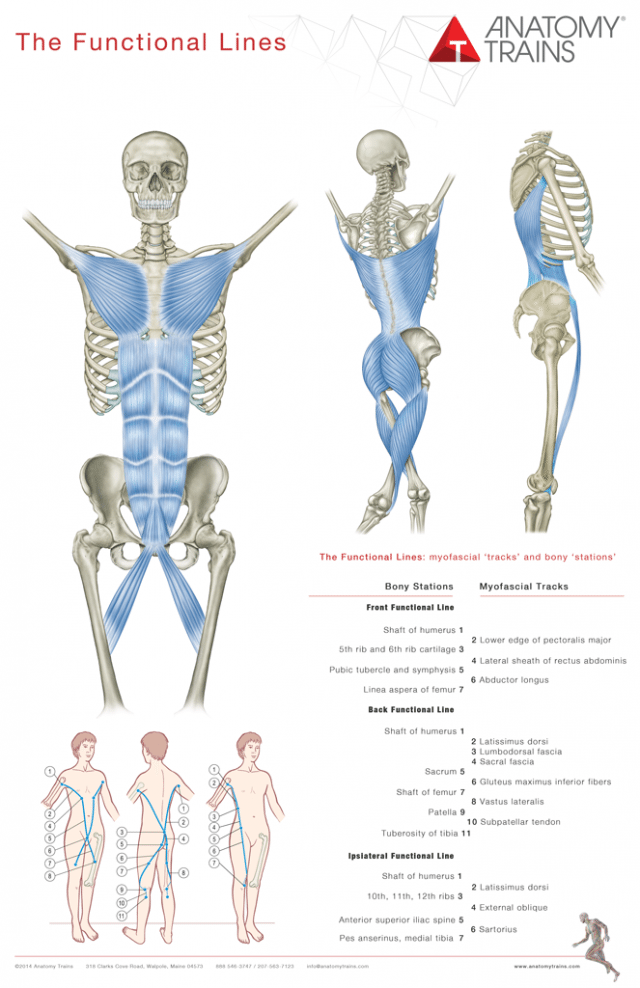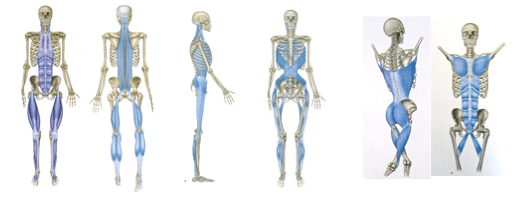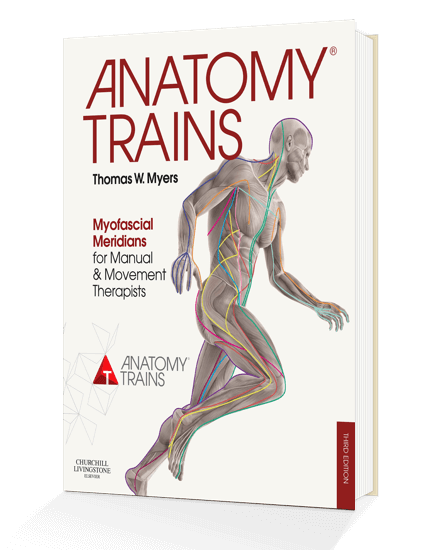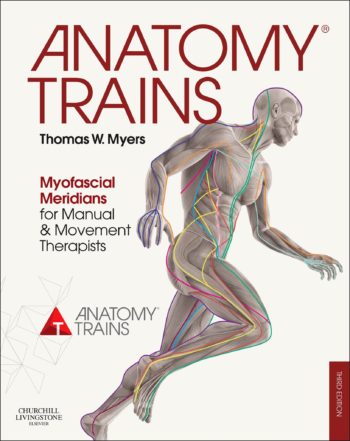
“What is Evidence-Based about Myofascial Chains: A Systematic Review”

So, how did studies get selected for this systematic review?
A search for peer-reviewed anatomic dissection studies, published from 1900-2014, was conducted using key search terms in Google Scholar, PubMed and ScienceDirect. This initial literature research yielded 6584 publications. Next, duplicate articles and articles not pertaining to the research question were removed and exclusion criteria was applied (Wilke et al., 2016). The final review yielded 62 studies. Of these studies, evidence of each meridian and its transitions were classified as strong, moderate, limited, conflicting or not existent (Wilke et al., 2016). A transition was considered a myofasical link between two muscles. For example, the gastrocnemius and hamstring are considered to be a transition of the superficial back line.
What did the results indicate?
The results yielded strong evidence for myofascial transitions in 3 of the 6 examined myofascial meridians: Superficial back line, back functional line and front functional line. In the superficial back line, 3 myofascial transitions (plantar fascia-gastrocnemius; gastrocnemius-hamstrings; hamstrings-lumbar fascia/erector spine) were verified in 15 studies. In the back functional line, 3 myofascial transitions (latissimus-lumbar fascia; lumbar fascia-gluteus maximus; gluteus maximus-vastus lateralis) were verified in 8 studies. Finally, the front functional line verified strong evidence for 2 myofascial transitions (pectoralis major-rectus abdominis; rectus abdominis-adductor longus) in 6 studies. There was moderate evidence for the meridians and transitions of the spiral line (5 of 9 verified transitions, based on 21 studies) and the lateral line (2 of 5 verified transitions, based on 10 studies). There was no evidence for the meridians and transitions of the superficial front line, based on 7 studies) (Wilke et al., 2016).
How can the results be applied to manual and movement practitioners?
The practical relevance of the findings by Wilke et al. (2016) regarding the existence of myofascial meridians can help explain how lines of pull and compensations in one structure of the body can impact other distance structures. As a result, more appropriate diagnostic, therapeutic and exercise strategies can be developed by manual and movement practitioners for their patients and clients.
Final Thoughts
The research by Wilke et al. (2016) is the first systematic review to provide solid evidence for the existence of the Anatomy Trains myofascial meridians, especially for the superficial back line and front and back functional lines. It is important that the limitations of the study be addressed in future studies. Wilke et al. (2016) suggest that future studies include randomized, controlled in vitro studies since most of the experimental research was carried out in vitro using cadavers. It will also be valuable to conduct further research on the spiral, lateral and superficial front lines to determine if there is stronger evidence to support their existence and begin to explore evidence for the deep front line and arm lines.
It will be exciting to see future research regarding the Anatomy Train myofascial meridians. As future research is published we will be writing about it. Stay tuned!
Holly Clemens, Ph.D.
References:
Grieve, R., Goodwin, F., Alfaki, M., Bourton, A-J., Jeffries, C., & Scott, H. (2015). The
immediate effect of bilateral self-myofascial release on the plantar surface of the feet
on hamstring and lumbar spine flexibility: A pilot randomized controlled trial. Journal
of Bodywork & Movement Therapies, 19, 544-552.
Hyouk, H., & Kang, H. (2013). The immediate effects of passive hamstring stretching
exercises on the cervical spine range of motion and balance. Journal of Physical
Therapy Science, 25, 113-116.
Myers, T. (2014). Anatomy trains: Myofascial meridians for manual and movement
therapists, 3rd ed. New York: Churchill Livingstone.
Weisman, M., Haddad, M., Lavi, N., & Vulfsons, S. (2013). Surface electromyo-
electrographic recordings after passive and active motion along the posterior
myofascial kinematic chain in healthy male subjects. Journal of Bodywork &
Movement Therapies, 18, 452-461.
Wilke, H., Krause, F., Vogt, L., & Banzer, W. (2016). What is evidence-based about
myofascial chains: A systematic review. Archives of Physical Medicine and
Rehabilitation, 97, 454-461.
Recommended
Anatomy Trains 3rd Edition Book & Posters
$99.95This packages includes the 3rd edition of the Anatomy Trains book & posters. Save $19.95 when you order the two together! Book: The brand new Anatomy Trains book (3rd ed., 317 pp) maps the longitudinal myofascial connections – how the muscles are functionally linked in ‘myofascial meridians’ through the fascial webbing. Anatomy Trains opens a… Read more
Read more






